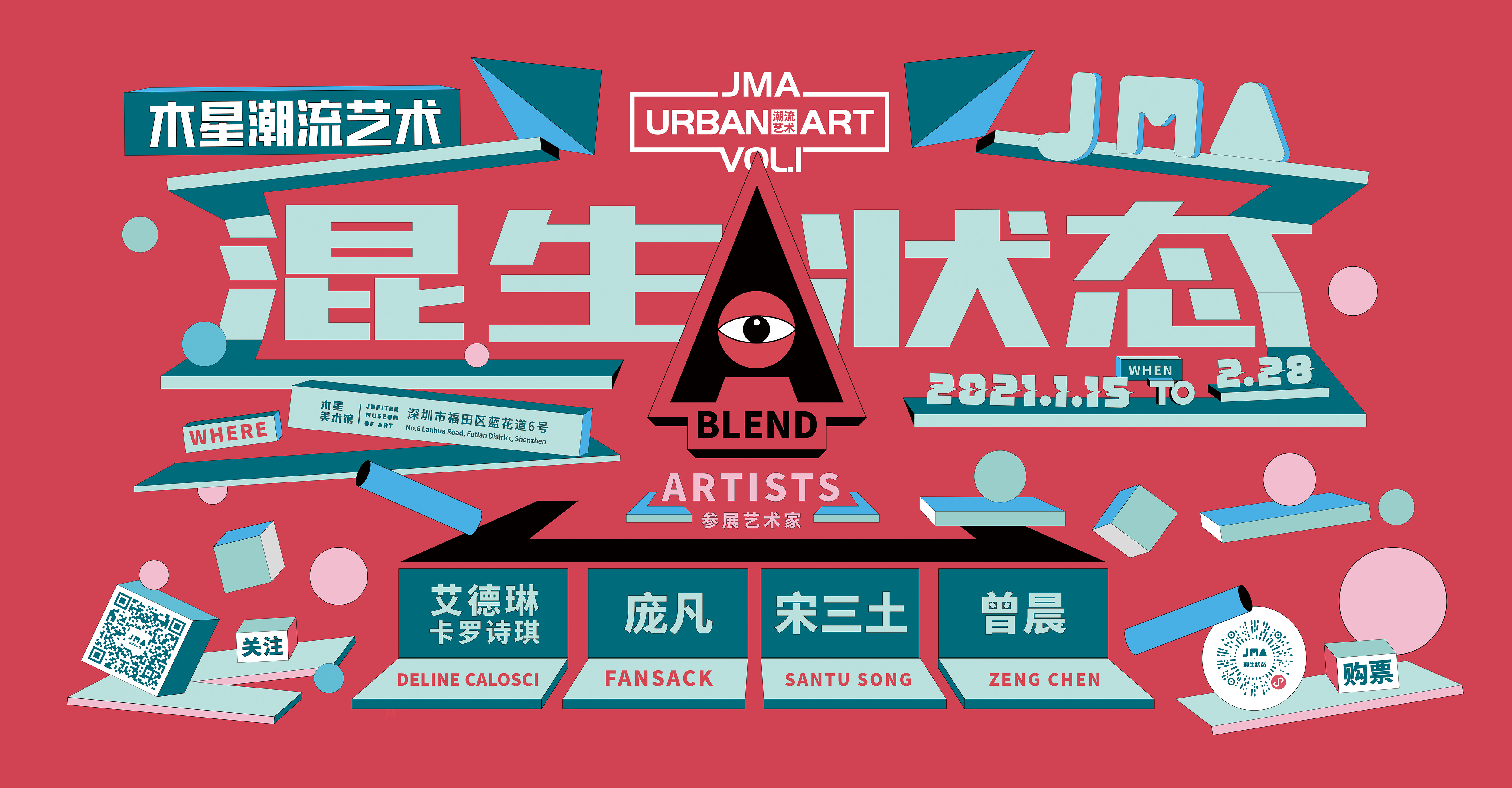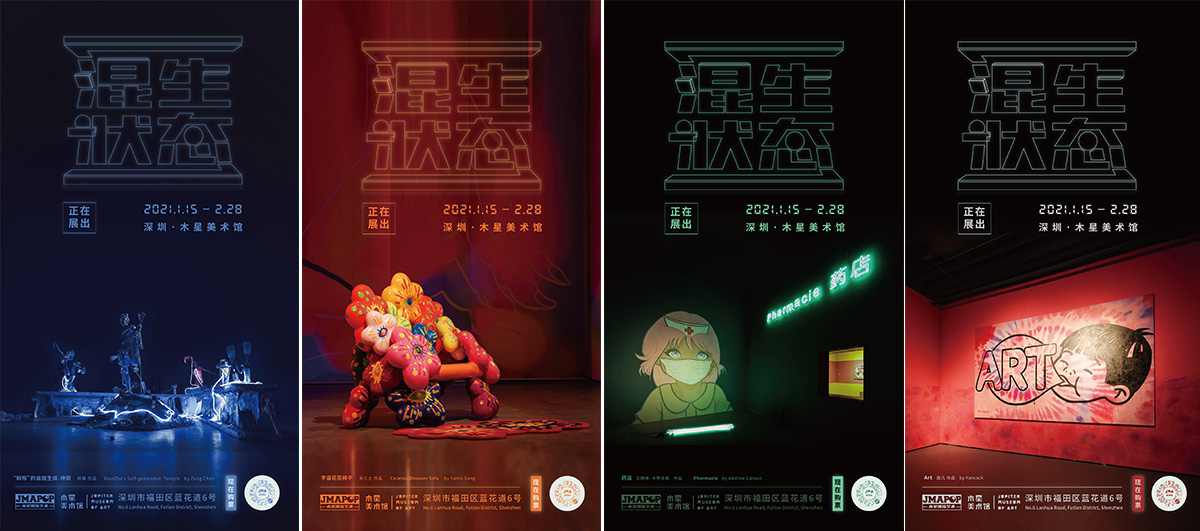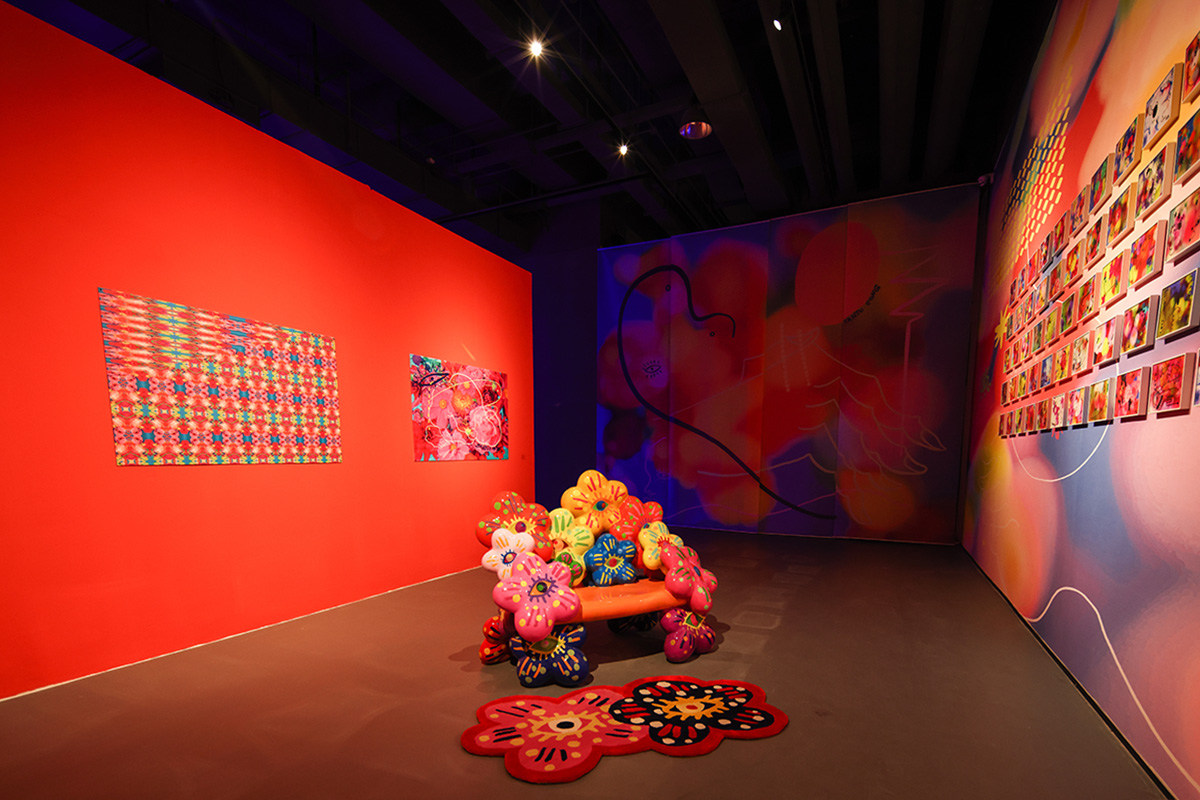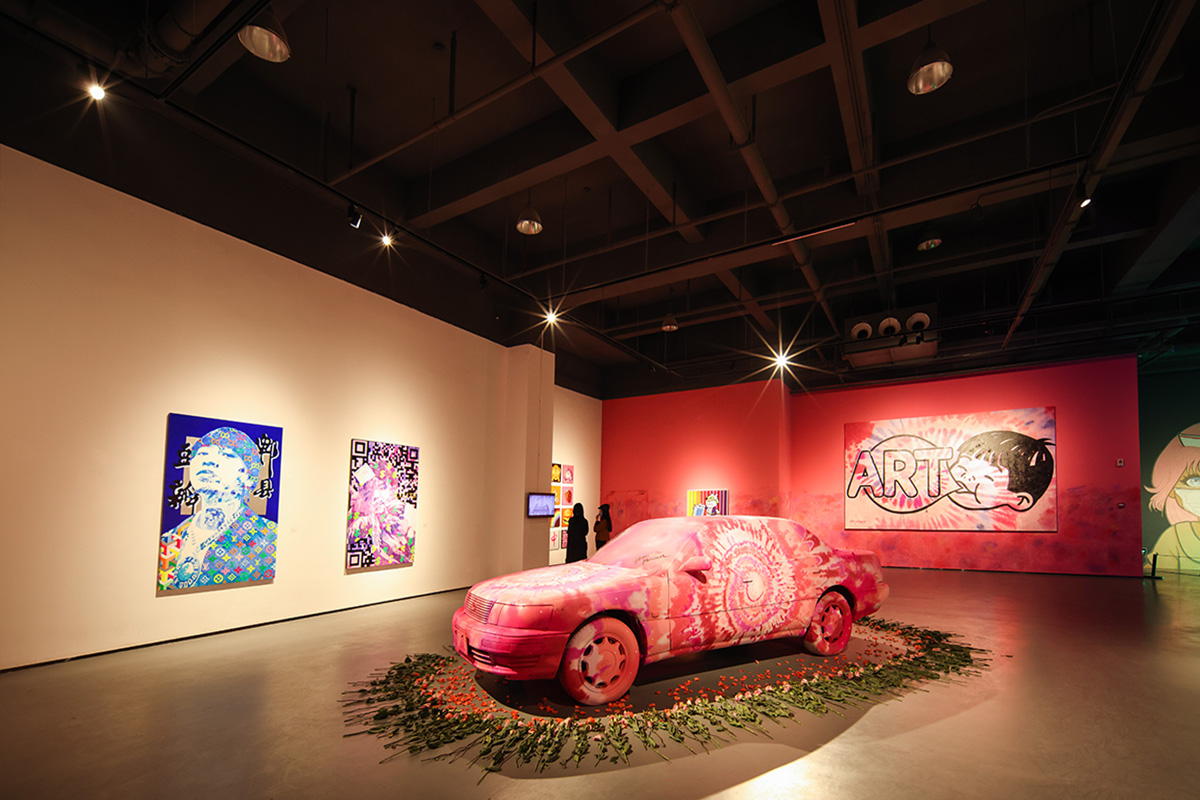
JMA-POP VOL.1 混生状态 A BLEND
“艺术不是一种为少数人所欣赏而保留的精英活动,而是为每一个人的,这是我不断工作的终极目的。”
——凯斯·哈林(美国艺术家,Keith Haring,1958-1990)
潮流,这个词来源于英文“Trend”, 在90年代被日本译作“潮流”,并被带到了香港和台湾,继而在大陆地区也被广泛应用。在潮流爱好者和大众的主推下,“潮流艺术”这个混生状态的词应运而生,似乎是一个比“波普艺术”(Pop Art/Popular Art)更容易让中国观众理解和接受的词汇。另一方面,陆蓉之提出“潮艺术”(URBART/Urban Art)的概念,试图强调的是在历史的每个阶段,每个地域都有被普遍关注和受欢迎的艺术,并以此角度来研究国潮的来龙去脉。在“每个人都会有15分钟的成名机会”的网红效应背景下,“潮流艺术”是否会成为中国大众艺术观点的代言呢?
木星潮流是木星美术馆的实验项目之一,旨在与年轻艺术家和大众一起探讨公众话语权在美术馆定位中的影响。此次项目以潮流文化为切入点和研究方向,以展览为实践手段,了解和讨论潮流文化在中国地域的现状和可能性。法国艺术家艾德琳·卡罗诗琪(Adeline Calosci)作品主要以西方流行文化和亚洲动漫为联系,对消费主义和人类欲望产生疑问。宋三土的作品则是宇宙与自我精神之间,以花朵表现个人感受、幻象和超自然的幻觉,使主观精神神秘化和对象化。Fansack庞凡作品探寻东方传统绘画与当代街头艺术之间的可能性,并寻求创造出新的艺术样式,他将自然中的物质、动物、东方的形象与当代社会的各种符号、标志性图像等进行组合。曾晨作品关注虚拟时代概念在新语境中的存在性变化与交互及对真伪性的探讨,应用不同形式人工智能技术,试图探讨艺术与技术新的协同模式。
“混生状态”这个话题除了就艺术作品,讨论艺术家创作形式和内容,四位艺术家都在尝试与商业的跨界合作,此次项目也在展览中特邀艺术家宋三土将其Santu Song商店搬到展览现场,与品牌的跨界模式首次呈现并落地木星美术馆。凯斯·哈林曾经说,如果商业化是把艺术印在衬衫上,使一个买不起3万美元画作的孩子可以买一件,那么他会全力支持(1968)。那“艺术为众人存在”的时代,会如他所向往的那样到来吗?
"Art is not an elitist activity reserved for the appreciation of a few, but for everyone, and that is the end toward which I will continue to work."
——Keith Haring (1958-1990)
"Chaoliu", derived from the English word "Trend", found its early translation in Japanese in the 1990s. It was then introduced to Hong Kong and Taiwan before being widely used in mainland China. Later the term "Chaoliu Art" came into being and appeared to become a more accepted term for Chinese audiences than "Pop Art". Victoria Yung-Chih Lu (Viki Lulu) put forward the concept of "Urban Art", emphasizing that in each stage of history, every region has art that is generally accepted and widely popular. From this perspective, this kind of art becomes a way to understand the ins and outs of a nation's cultural trends. Within the new context of the impact of social influencers, does this understanding of "Chaoliu Art" properly encapsulate the reality of popular Chinese art?
JMAPOP is one of the experimental projects of the Jupiter Museum of Art. The project aims to foster dialogue with young artists and the public about the social and cultural positioning of JMA. The project starts with new cultural trends as its research direction and uses the exhibition as the practical means to analyse and explore the current situation and possibilities of these trends in China.
French artist Adeline Calosci's art works are mainly linked to Western popular culture and Asian animation, questioning consumerism and human desire. Santu Song creates a dialogue between the universe and the self, using "flowers" to express personal feelings, illusions and supernatural illusions, allowing the subjective spirit to come to the fore. The work of Fansack explores the possibilities between traditional Eastern paintings and contemporary street art, while also seeking to create new artistic styles. He combines animals in nature and Eastern figures with various symbols and iconic images from contemporary society. Zeng Chen's artwork mainly focus on the existence of the virtual in the future and the questioning of artistic authenticity by applying different forms of artificial intelligence technology, while also attempting to explore the new collaborative mode of art and technology.
In addition to discussing the varied states of any artist's work, the four artists also focus on cross-border cooperation with business. In this project, the artist Santu Song was invited to present her store in the exhibition. This cross-border model of cooperation with brands was presented for the first time, landing at the Jupiter Museum of Art. Keith Haring stated that if commercialization is to print his artwork on a shirt so that a child who cannot afford a $30,000 painting can purchase it, then he would fully support it (1968). Is this era when "Art is for everybody", as he has longed for, finally here?
展览现场







